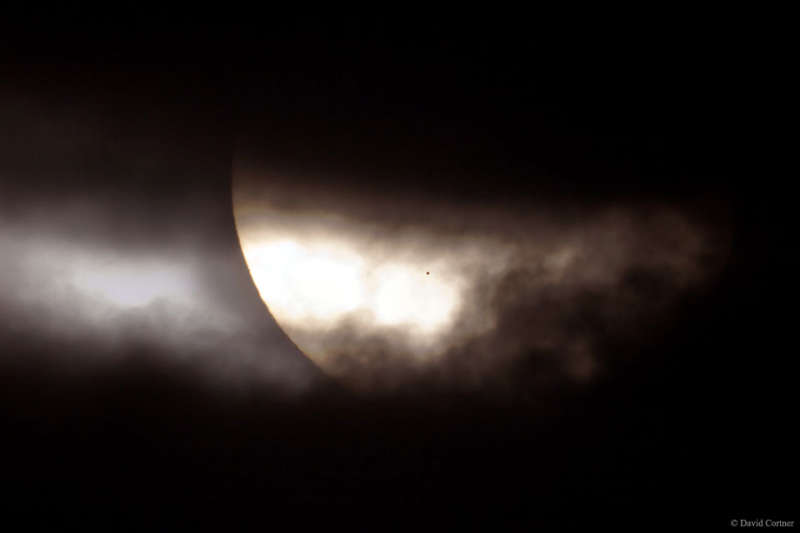
|
Credit & Copyright: David Cortner
Explanation:
What's that dot on the Sun?
If you look closely, it is almost perfectly round.
The dot is the result of an unusual type of
solar eclipse that occurred in 2006.
Usually it is the
Earth's Moon that eclipses the Sun.
This time, the planet
Mercury
took a turn.
Like the approach to New Moon before a
solar eclipse,
the phase of Mercury became a continually thinner
crescent as the planet
progressed toward an alignment with the Sun.
Eventually the phase of
Mercury dropped to zero and
the dark spot of
Mercury crossed our parent star.
The situation could technically be labeled a Mercurian
annular
eclipse with an extraordinarily large
ring of fire.
From above the
cratered planes
of the night side of
Mercury, the Earth appeared in its fullest phase.
Hours later, as Mercury continued in its orbit, a slight
crescent phase appeared again.
This was ten years ago -- the next Mercurian solar eclipse will
occur tomorrow.
NASA Coverage:
Tomorrow's
Transit of Mercury across the Sun
|
January February March April May June July August September October November December |
| |||||||||||||||||||||||||||||||||||||||||||||||||||||||
NASA Web Site Statements, Warnings, and Disclaimers
NASA Official: Jay Norris. Specific rights apply.
A service of: LHEA at NASA / GSFC
& Michigan Tech. U.
Based on Astronomy Picture
Of the Day
Publications with keywords: Mercury - Sun - transit
Publications with words: Mercury - Sun - transit
See also:
- APOD: 2025 May 21 Á International Space Station Crosses the Sun
- MESSENGER s Last Day on Mercury
- APOD: 2025 March 16 Á Venus and the Triply Ultraviolet Sun
- APOD: 2024 September 16 Á Mercurys Vivaldi Crater from BepiColombo
- APOD: 2024 September 2 Á A Triangular Prominence Hovers Over the Sun
- APOD: 2024 August 18 Á A Solar Prominence Eruption from SDO
- APOD: 2024 August 4 Á Gaia: Here Comes the Sun
